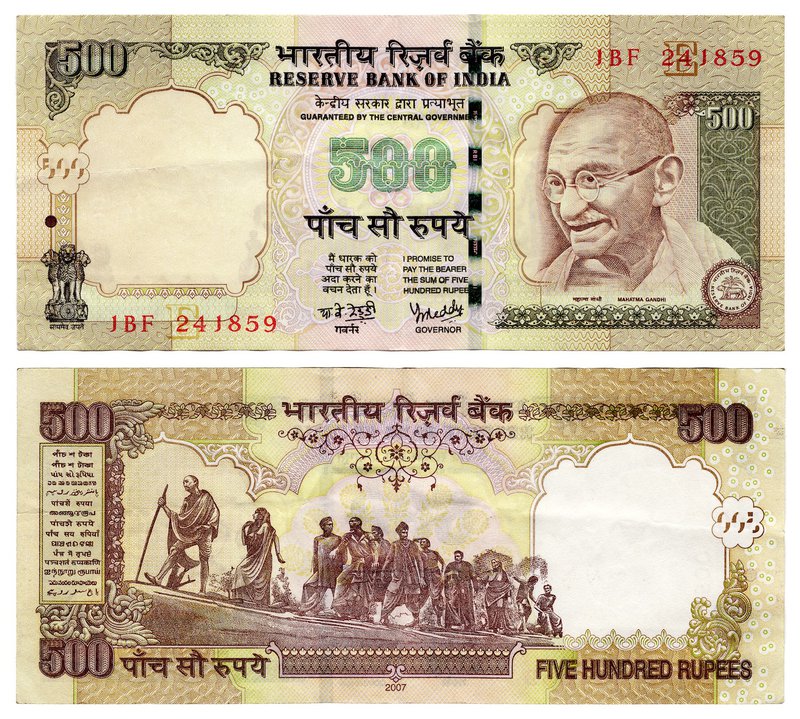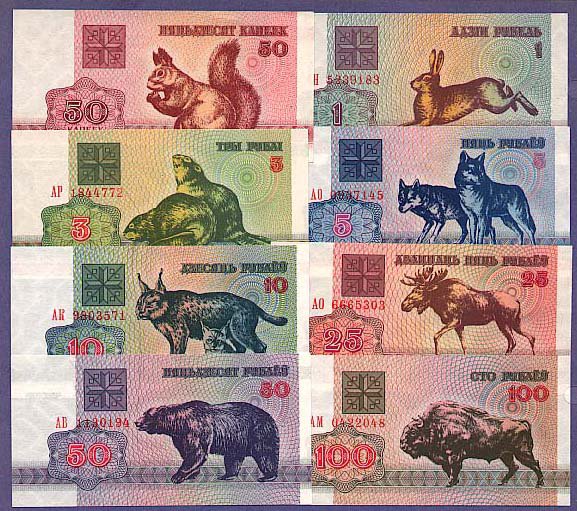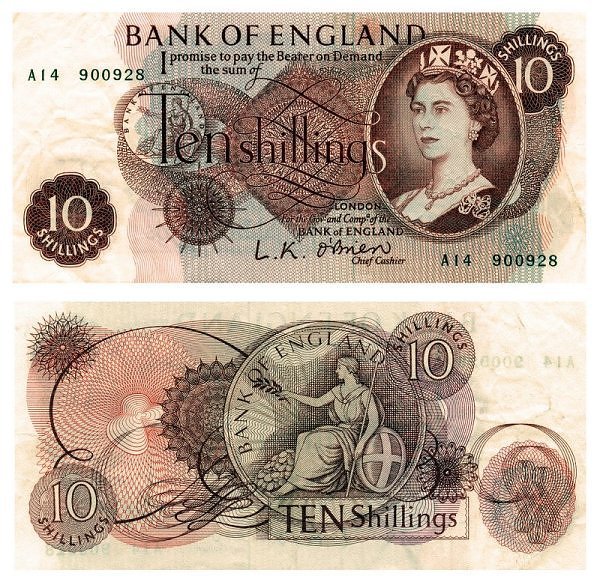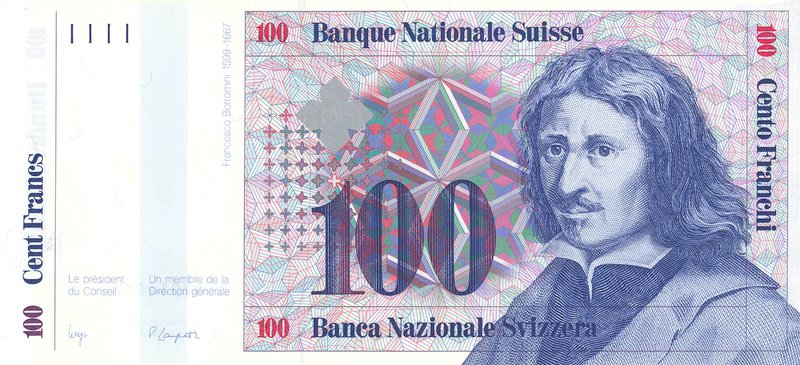The banknote as a form of currency goes back to the 7th century in China. When Marco Polo returned to Europe after his travels in the Far East in the 13th century, Europeans scoffed at the idea that the Chinese used paper for money. It wasn’t until 1661 that paper currency was introduced in Europe, when Johan Palmstruch of the‘Stockholms Banco’ in Sweden first printed paper banknotes as a temporary currency. The Bank of England, founded in 1694, was the next to follow suit with paper banknotes, followed a year later by the Bank of Scotland. By the early 1700s many countries were producing paper currency.
One of the most immediate problems faced with producing banknotes was how to identify them, or how to decorate them. Banknotes would be widely distributed and viewed by many, so it was important to come up with appropriate images for both sides of the paper.
Early banknotes had very little on them – usually just some indication as to what the value of the note was – but gradually over time, and as the ability to print and engrave paper became more sophisticated, the images on banknotes became more complex. They also became more symbolic. The images printed on the banknote could be used to make a political statement about the producer. Iconography could be used to comment about their stature, their power, and their significance.

In this article
Historic events

The right to produce currency was one of the issues which lead to the American Revolution in 1775. Prior to the revolution, Benjamin Franklin had argued with the British Parliament to allow the British Colonies the right to produce their own colonial currency. Denying them this right was one of the final acts that drove the colonial Americans to revolt against the British Crown.
When the revolution broke out, the American Congress funded the war by printing their own currency. While flooding the market with paper money caused a serious case of hyperinflation, it did allow them to finance the war, which eventually led to their independence.

The White House is an iconic image for the American people, as the home of their President, and makes a fitting nationalistic image for their currency.
Not just in America, but in most countries that adopted the banknote, it became a symbol of their nation and a place where they could celebrate their heroes, their history and their significant achievements. Like the one of the founding fathers of America, Benjamin Franklin, who appears on the 100 dollar bill.
Looking back over the development of art on the banknote, certain trends start to appear. Many designs have been tried out, but some common themes emerge. Animals, historic events, famous places and famous faces seem to be the most common images depicted.


This commemorative 10 dollar note from Australia, produced in 1988, remembers the settling of Australia. The front shows HMS Supply anchored in Sydney Cove with the early colonialists in the background. The reverse of the note depicts an Aboriginal Australian youth covered in traditional markings.

The front of this 500 rupee bill from India has a portrait of Gandhi, while the reverse has a commemorative image of Gandhi’s famous Salt March to Dandi– a non-violent protest against the British taxation of salt in colonial India on March 12, 1930.
If you find banknote artwork interesting, then you'll be fascinated by these creations made using money.
Animals
Animals have always been a powerful imagery in any art form. Whether it is the strength of a bear or the ferociousness of a lion, they have been enduring symbols of a nation’s strength. Sometimes the animal depicted is one that is synonymous with that particular country, unique to their self-image. It seems when it comes to deciding what should be printed on the currency, they’re often a natural choice.

This collection of contemporary banknotes from Belarus features many different animal designs. They are a fine example of colour printing on paper currency.

This is the reverse of the five riyals note from Qatar depicting their take on the native animals.

This Indian rupee note features some of the characteristic animals of India – the elephant, rhinoceros and the tiger. The detail on the engraving is very good.
Famous faces
If you were going to print money, who would be the first person you would think about putting on the currency? The obvious choice is the ruling King, Queen or Leader. This has been the case since the earliest history of banknotes, which often featured a prominent representation of the ruler.

This 100 roubles Russian note pre-dates the Russian Revolution and commemorates the ruler Catherine the Great. The image establishes her legend as a great monarch.

The ten-shilling note was removed from circulation in England in 1969, so the note shown must predate that time. It shows a young Queen Elizabeth and establishes an image of her, which would appear not just on banknotes in England, but also throughout much of the British Commonwealth. On banknotes she managed to keep her youthful looks for a long time, although in recent years a new, more mature image of the Queen has emerged.
Rulers didn’t have to be Kings and Queens. It could also be Presidents such as Abe Lincoln. Here Abe Lincoln is commemorated on a series 1934 five dollar bills.

However, it isn’t just rulers and leaders who have been depicted on banknotes. Take this Swiss franc note which commemorates an architect.

Francesco Borromini, 1599-1667, was a Swiss/Italian architect, who together with Gian Lorenzo Bernini and Pietro da Cortona were active in Rome in the development of Baroque architecture. His work can still be seen in some of Rome’s finest churches including: San Carlo alle Quattro Fontane and Sant’Agnese in Agone. His work and life are remembered in his native Switzerland on the 100 franc note.
Next time you receive your change from a purchase, take a moment to actually look at the artwork on the notes you receive. It’s worth appreciating the beauty of the images that appear on the bills we handle every day but so often go unnoticed.
